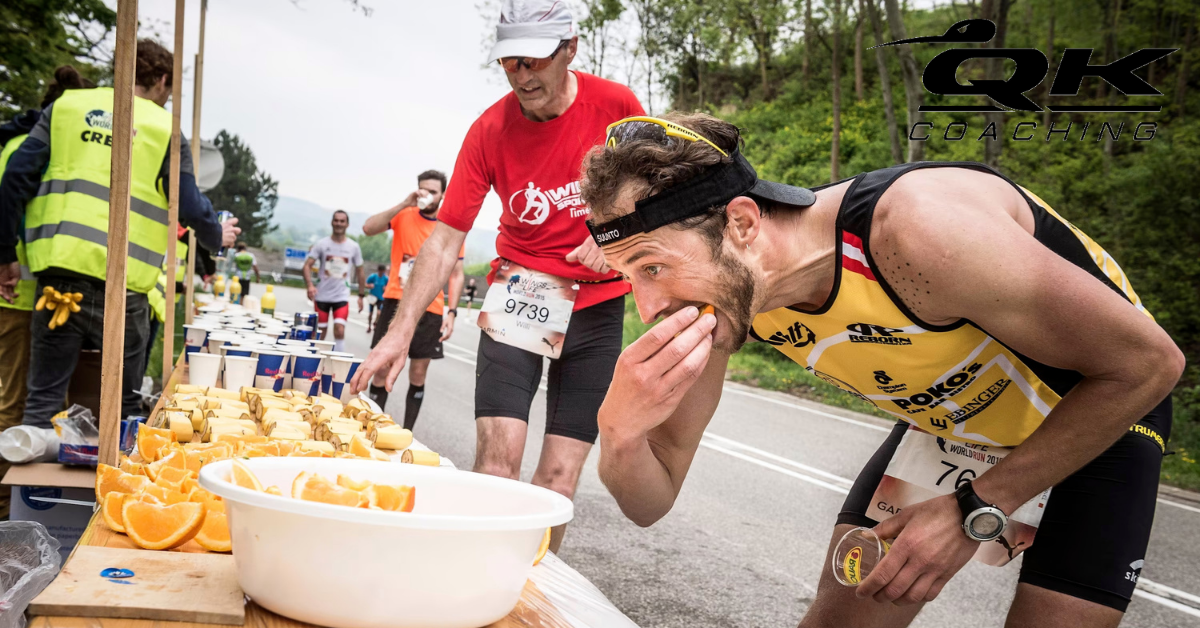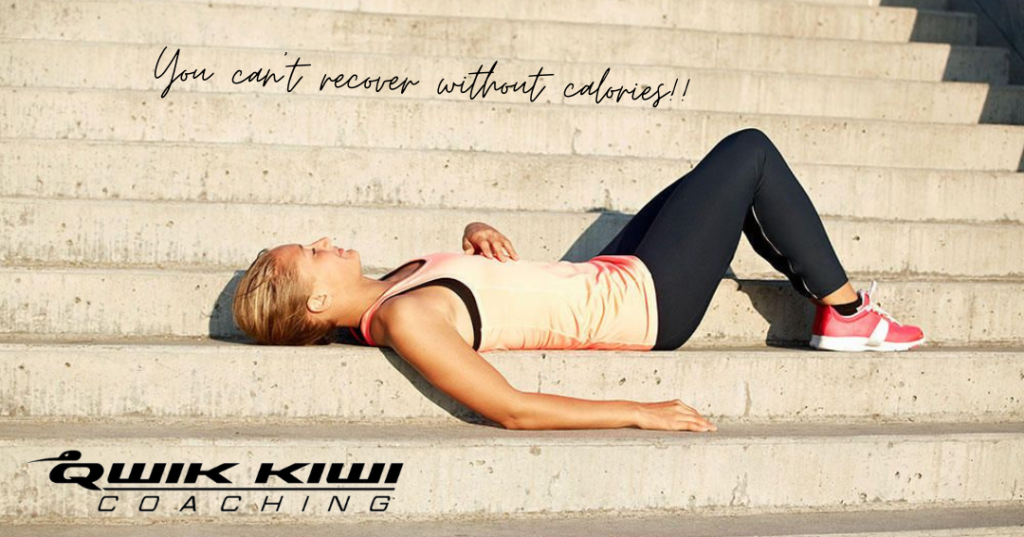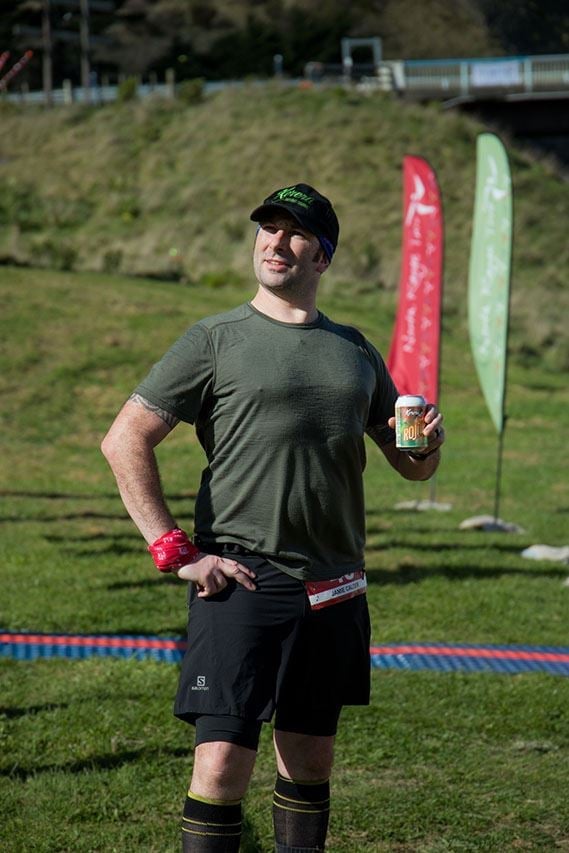One of the biggest limiters for performance in Ultramarathon’s is your energy stores in your body. How do you maximise before you start? How do you keep it topped up during? And how do you replace it afterwards? Getting your nutrition sorted can optimise performance and make life more pleasant for you during and afterwards.
Here in New Zealand we’ve recently had a whole lot of events cancelled due to COVID compliance issues. Tarawera Ultra was cancelled but other events such as South Island Ultra, Three Peaks Mountain Race and Southern Lakes Ultra are all smaller events that have plans that are COVID compliant under the Red traffic light setting.
Nutrition plays a large part for any participant competing in these types of events. Whether a single day event or a multiday event there are slightly different approaches needed to maximise your results. Before we look at that lets have a look at some key principles.
I focus on three different phases for event nutrition:
- Phase 1: Pre-Event
- Phase 2: During Event
- Phase 3: Post Event
Pre-event is all about loading the body up, often called carbo-loading. The analogy is putting the petrol in the car before a road trip.
During the event is pretty self explanatory, and is the equivalent to topping the car up during the road trip but there is more to it than simply topping up. As with any good road trip you will go past plenty of petrol stations. The main street of Blenheim has has plenty of petrol stations, you certainly would fill up at all of them. But you would never run out of petrol if you filled up in Blenheim and Kaikoura, and Amberley, and Rolleston, and Ashburton, and Timaru, and Oamaru….you get the picture. The more consistently and frequently you top up your fuel the better the road trip (or ultra) will be – besides all those petrol stations you are bound to get an ice-cream too 😃
Whilst you are participating in your Ultra, the more economical you can be the better your performance will be. Constant accelerations, braking, accelerating again is not economical whether on a road trip or an ultra and you will burn through your fuel/energy stores quickly.
After the event it is also important to refuel as well. This will provide plenty of benefits that will make you feel and perform better throughout the week that follows the event. Just like a road trip filling up at your destination will give you freedom from the stress of whether the ‘E’ (for Enough) light will come on when heading out to the supermarket, you will need some fuel in your body for the days after the event (irregardless of whether you need to do another road trip back to the start).
If you were doing Tarawera and this was your main focus for the season, you may not care about Post-Event nutrition. But fuelling appropriately post-event can greatly assist you do simple things in the days and weeks immediately following the event. I think back to after my first Ironman in 2003. The day after I saw an athlete hobble across the road and almost get run over because they could barely walk. I myself wasn’t in a good state, so I waited for a reasonable gap before I attempted to cross the road, but then the lights changed further along and I had to hobble faster but I had nothing in the tank to allow me to do so. In following years by focusing on Post-Event nutrition I’ve my and large managed to avoid these issues since.
Maybe you were doing the 50km event at Tarawera (I know it didn’t happen but bare with me) as a build up event for the 100km South Island Ultra. It wasn’t your main goal, you’ll need to recover and get back into your training quickly to continue to build your fitness. Post-Event nutrition will be key (along with massage, stretching and other recovery techniques) to ensuring this can happen. Nutrition plays 80% of the role and all the other associated recovery modalities contribute the remaining 20%.
Pre-Event Nutrition
Often referred to as Carbo- or Carbohydrate-Loading the aim of Pre-Event Nutrition is to load your bodies reserves with glycogen (glycogen is carbohydrate broken down and stored in the body), so you have more than what is normally available for you.
The traditional approach was to go through a glycogen depletion phase where you strip the body of reserves then gorge on carbohydrate rich foods to the body stores extra. That approach would leave you tired and exhausted, often not in a position to race well. This was popular during the running boom of the 70’s and 80’s, research from the 1990’s showed this was unnecessary, simply by eating more carbohydrates your body would store them for about 48 hours.
A more modern approach is for the 24-48 hours leading into an event is to eat carbohydrate rich foods to allow the body to store extra glycogen. Just be aware that for each gram of carbohydrate that is stored it will need 3 grams of water to store it (how is that for a bonus to ensure you are well hydrated?) If you manage to store an extra 500g of carbohydrates (a massive amount), you will need 1,500g of water on board as well. Over these two days you will notice a change in your weight that might be counter intuitive, especially since you will be exercising less as a result too. Trust me when I say you will burn it off during your ultra and it isn’t anything to be concerned with, it is actually a positive sign.
Simple strategies you can follow to boost your nutrition (and hydration) in the days leading into the event are to always have chilled bottles of water in the fridge and aim to keep drinking to ensure your urine flows clear through out the day. Plan healthy, nutritious meals that are packed full of low/moderate GI carbohydrates such as rice, potato/kumara or pasta, with a healthy vegetable based sauce (as opposed to a creamy/cheese sauce) and reasonable serving of protein.
My favourite pre-race meal is:
Whilst travelling to the event (on your road trip) some healthy snacks that are easy to consume are good. I will often have a loaf of fruit loaf that I’ll snack on whilst travelling to an event. But make sure you also have access to plenty of water to keep your hydration up.
The morning of the event you will need a light breakfast (your glycogen stores should already be maximised), that won’t upset your stomach when you start running. Preferably you can consume this 2-3 hours before event start. Depending on when your event is scheduled to start this may not be practicable. Traditional for me is my regular breakfast of muesli with yoghurt and/or berries. See my recipe at the end of the article.
Don’t over do the hydration at this point as you’ll find yourself needing to urinate multiple times during the event.
During-Event Nutrition
The body can absorb about 60g of carbohydrates per hour. Use this as a benchmark for planning the fuel you carry and aim to consume each hour. Allow a bit of a fudge factor in case it takes you longer to get to the next aid station or finish line. Fuel during the event should be based around high-GI sources of carbohydrates so they can be absorbed quickly and then distributed to the working muscles to be burnt as energy.
Sweet, commercial products such as electrolytes, gels etc… are convenient but your desire for them wanes after a few hours. If you intend being out on the trail more than three hours I’d recommend including real food as part of your plan. However there is nothing stopping you including commercial products (especially early on during an event).
As the event gets on, replacing lost salt becomes important and convenient snacks such as potato chips and pretzels can be a great source, but by replacing salt through an electrolyte drink early in the event can greatly assist with managing this.
High-GI sources of real food carbohydrates that are convenient for out on the course can be honey sandwiches made with white bread, muesli bars (especially golden syrup bars), soft lollies such as jet planes etc… Mix and match a combination that allows you to have a a variety of sources of carbohydrates spread through the event. Just because a bar provides 39 grams of carbohydrates doesn’t mean you need to gulp it all down immediately. You can have half now, with a Gu Chew in 20 minutes time and the other half of the bar 20 minutes later and you have consumed 61 grams of carbohydrates in the hour with another product in 20 minutes time for the start of the next hour.
| Product | Serving Size | Carbs (g) |
| Hammer Perpetuem | 2 scoops | 54 |
| Em’s Power Bars | 1 bar | 46-52 |
| White bread honey sandwich | 2 sandwich slices with a tbsp honey | 44 |
| Bumper Bar | 1 bar | 39 |
| Pizza | 1 segment | 30 |
| Banana | One | 27 |
| Apple | One | 25 |
| Tailwind Endurance | per scoop* | 25 |
| Leppin Squeezy | 1 sachet | 25 |
| Nature Valley Muesli Bars | 1 bar | 24.5 |
| Gu Chew | 8 chews | 22 |
| Gu Gel | 1 sachet | 22 |
| Snak Log | 1 bar | 21.5 |
| Jet Planes | 3 lollies | 21 |
If you wash your real food down with some sort of electrolyte drink, if it also contains carbohydrates this needs to be accounted for in the total carbohydrates consumed that hour. This will depend on how strongly it has been mixed. Products like Tailwaind Endurance recommend a range of mixes depending on different factors. You can mix it up stronger or more diluted depending on your needs. In the table above, if you mix up 2 scoops into a drink bottle that’ll provide 50 grams of carbohydrates, but if you drink that bottle over two hours it’ll only provide 25 grams each hour.
It’s important to stay on top of your hydration, especially if it is a hot day. I recommend setting an alarm for every 15-20 minutes that can remind you to drink four or three times each hour respectively. You want to be drinking enough to almost have the urge to urinate without having to actually urinate too frequently (the more time you are stopped, the more you are stopped).
The other aspect of this is to ensure you are as economical with your fuel as possible. Just like a road trip. I’m going to borrow the concept of “burning matches” from Hunter Allen & Andrew Coggan and the world of cycling. You start the event with a match box of matches. The concept of a match is either a sustained or hard effort. Whenever you put in a sustained or a hard effort you burn a match. How big is your match box??? Well that is the million dollar question, but each time you burn a match you are getting closer to being empty. Your match box will be more-, or less-full depending on your preparation but also by how well fuelled you are. One thing for sure is that it isn’t unlimited. Keep your effort consistent and you will be more economical (just like driving a road trip).
If you need to work hard because you are racing to beat someone, or to avoid a cut off, you will need to be prepared for the effort. Prior to digging deep (if you have some advance warning), top up your fuel a bit, so that whilst working hard that can be absorbed and available for energy shortly. Use simple carbohydrates that are high on the Glycemic Index (GI). This is a great opportunity to consume some jet planes or a more commercial gel product, as the energy will be delivered into the blood system quicker.
Post-Event Nutrition
After the event a number of people don’t care about what they eat or drink but this is a vitally important time to consume nutrition. It isn’t too uncommon for a beer to be cracked (and enjoyed) near a finish line. Don’t get me wrong it will certainly have been earned, but alcohol has a negative effect on hydration levels. The alcohol will contribute to replacing the caloric value depleted but there are other priorities first.
To ensure that you get the best opportunity to recover and either continue training sooner, or living life to the fullest again, it’s important to ensure that what has been expended is replaced. It’s not uncommon to burn 2,000kJ in an hour of exercise, but your body has a limited ability to consume and/or tolerate all that whilst exercising. It is vitally important that you go someway to replacing it as soon as possible.
There are some indications that their is a window of opportunity from about 20 to 120 minutes after you finish exercising where your body absorbs energy more readily but it isn’t 100% clear. Whether your body can actually absorb energy more readily or not, the soon you take on energy post-exercise, the sooner it is on board for you.
After an event you will be in an energy deficit, in the perfect world you will be able to replace this energy calorie for calorie, or kiloJoule for kiloJoule. A quick aside, a Calorie is the imperial measure of energy has 4.2 kiloJoules which is the metric equivalent. Depending on a number of factors will determine how much energy you expend. The more mass you carry, the longer you run and the faster you run will all ensure that you expend more energy than a smaller runner who is running at a lower intensity for less distance or duration.
If you run with a Garmin (or similar) especially one that has your user data including weight entered and has a heart rate monitor, this will generate a reasonable estimate of how much energy you burned. If you factor in what you consumed during the event, you can estimate how much energy you need to consume post race. Just a word of warning, if you do the math and then force yourself to eat that volume it will be a very large meal in many instances and it won’t be comfortable or pleasant to consume.
You need to be realistic and accept the fact that after an ultra you will be in an energy deficit and it doesn’t ALL need to be replaced immediately. But if you are doing a multi-stage event such as Southern Lakes you need to get as much back on board as practical (there are other limitations at play here).
As I touched on before alcohol impacts the bodies ability to hydrate (or rehydrate), before consuming any alcohol I highly recommend consuming a reasonable quantity of fluid (either water or electrolyte).
Summary
Nutrition and hydration go hand in hand to ensure success at an ultramarathon. It isn’t just during the event that counts or contributes to that success, it starts before the event to ensure you are well fuelled. Clearly during the event is important and that provides the immediate fuel, or the top up of the immediate fuel. But post-event nutrition contributes to the success for follow up events by allowing you to get moving again quicker.
Recipes
Here are some meals I enjoy that can assist with event prep and recovery (as well as from hard training sessions):


